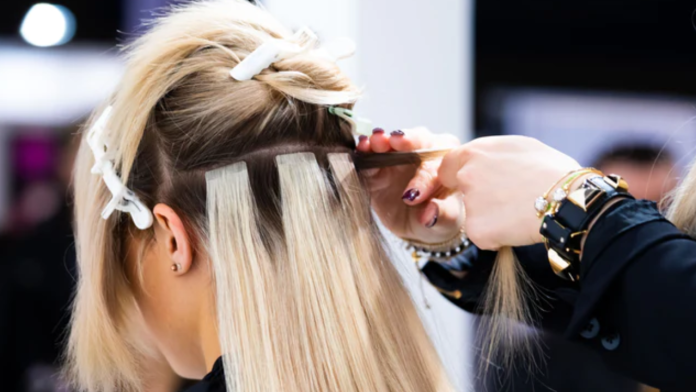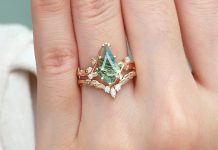Hand-tied extensions are rapidly becoming the most popular type of hair extension. They are widely sought after because they can be tailored according to the client’s requirements and needs—the longevity and ease of upkeep appeal to both stylists and clients.
Machine weft extensions are a group of hairs stitched together by a machine. They are thicker and heavier than hand-tied wefts, with a broader fabric seam on top. Machine wefts are inexpensive, long-lasting, and easily cut to any length. Let’s explore hand tied vs machine weft and find the perfect fit for your natural hair.
What Is The Difference Between Hand-Tied And Machine Weft?
The categories of hair wefts are hand-tied and machine wefts (this page does not cover hybrid weft hair extensions). Their manufacturing process determines the primary distinction. Hand-tied hair extensions are just what their name implies—hand-woven hair strands along a strip of PU skin or linen. Hand-tied wefts are noticeably thinner and finer than machine-tied wefts because the hair, fabric, or PU slip are hand-sewn together.
As the name suggests, a sewing machine weaves hair strands along a strip of cloth or PU skin. Machine wefts are much thicker since the machine needs a lot of hair to catch and stitch the hair and the cloth or PU strip together.
Thin Hair Is Suitable for Hand-Tied Wefts
Hand-tied extensions are ideal for clients with fine or thin hair because they are lightweight and thin. As previously stated, hand-tied wefts have numerous styling options and layer attachment possibilities, which enable them to blend in so well with real hair that the wearer’s identity remains a mystery.
Finer hair types benefit from hand-tied weft extensions as well since they can rest flat against the back of the head, creating a smooth, voluminous head of hair. For instance, New Times Hair offers hand-tied hair wefts in over ten shades, ranging from light blonde to black. Natural human hair for sew-in hair extensions, with lengths ranging from 14 to 28 inches, is incredibly silky and comes from a single donor. The wearer barely notices the weight of the hair.
Machine Wefts Are Ideal for Coarse or Thick Hair
For clients with coarse or thick hair, machine wefts are ideal since they may effectively conceal the thick track of the weft. This implies that people with thinning or delicate hair should avoid machine wefts for weight.
Weft hair extensions from New Times Hair are created entirely of Remy human hair from a single donor; no other strands are combined. The hair is robust, healthy, lustrous, and silky.
But since we are trained stylists, we have some flexibility. A customer may receive both machine- and hand-tied hair wefts, hybrid wefts, and a combination of both types of wefts. Wefts can be machine-stitched to the back of the head and hand-tied around the crown, where the hair is more sensitive. We shall talk about this in a later post. We ask that you monitor our blog page.
These days, a lot of hairdressers also select wefts for clients based on the size of their heads. You can clip the machine-tied wefts to the appropriate length if the hand-tied ones are too lengthy. Having said that, the most crucial thing to remember is to match the wearer’s natural hair density with the hair extension and take extra care when connecting it to areas of the hair that are brittle.
Conclusion
Hand-tied extensions are the best option because they provide custom solutions and last a long time. Their handcrafted artistry produces a lightweight, smooth finish that looks natural and is pleasant to wear. Machine weft extensions may be less expensive, but they lack the refinement and comfort of hand-tied extensions. For people who value variety, comfort, and hair health, hand-tied extensions are the best solution.









